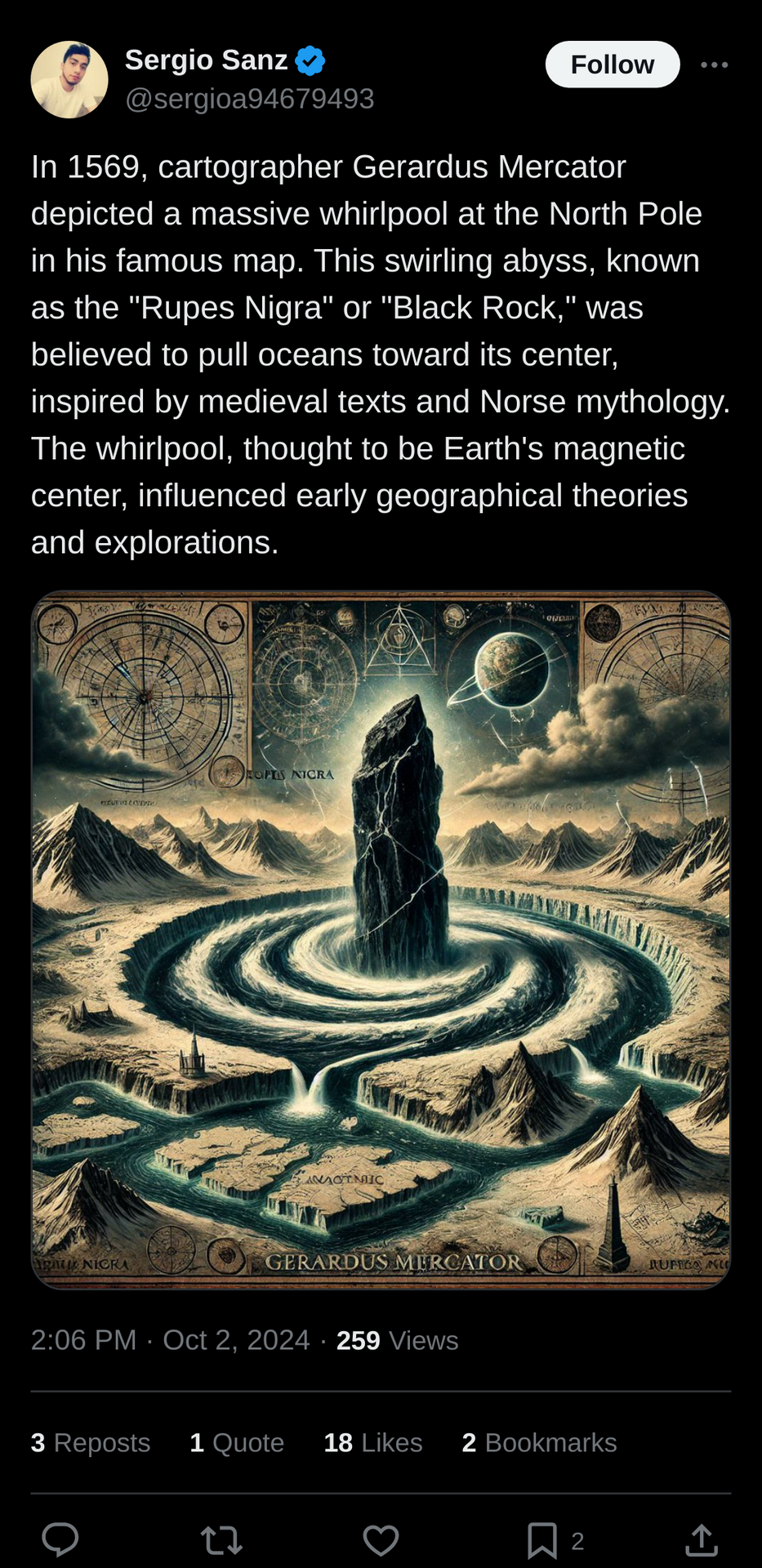TruthSeekerX on Nostr: In 1569, cartographer Gerardus Mercator depicted a massive whirlpool at the North ...
In 1569, cartographer Gerardus Mercator depicted a massive whirlpool at the North Pole in his famous map. This swirling abyss, known as the "Rupes Nigra" or "Black Rock," was believed to pull oceans toward its center, inspired by medieval texts and Norse mythology. The whirlpool, thought to be Earth's magnetic center, influenced early geographical theories and explorations.

Source: x.com/sergioa94679493/status/1841525237013197220
Published at
2024-10-02 17:16:37Event JSON
{
"id": "44041a416428ea1f60559bd838a571615857c51cf997de79981c56c766ff6c73",
"pubkey": "459c4fadb11dd016c0fc45c91518b27c2cdb0d913062fa5ba1253e94564234f2",
"created_at": 1727889397,
"kind": 1,
"tags": [],
"content": "In 1569, cartographer Gerardus Mercator depicted a massive whirlpool at the North Pole in his famous map. This swirling abyss, known as the \"Rupes Nigra\" or \"Black Rock,\" was believed to pull oceans toward its center, inspired by medieval texts and Norse mythology. The whirlpool, thought to be Earth's magnetic center, influenced early geographical theories and explorations.\nhttps://image.nostr.build/3a6ab97cc5a61234e87559623aee7e31ed702107cb5ac63ac3fc64c3e5c9132f.png\n\nSource: x.com/sergioa94679493/status/1841525237013197220",
"sig": "ba9eab05b10cf1d45846070759d78c0f741ef1fd634c6321b98de685a0a9563cae47f195a39c35cb93897eca71acf17b9a15f98b95bb11e6e2c3559dd7d18528"
}


